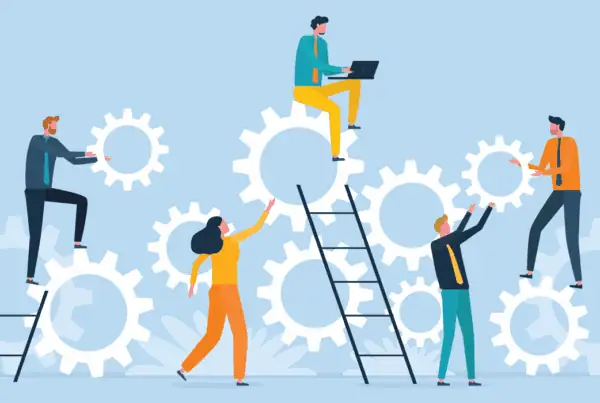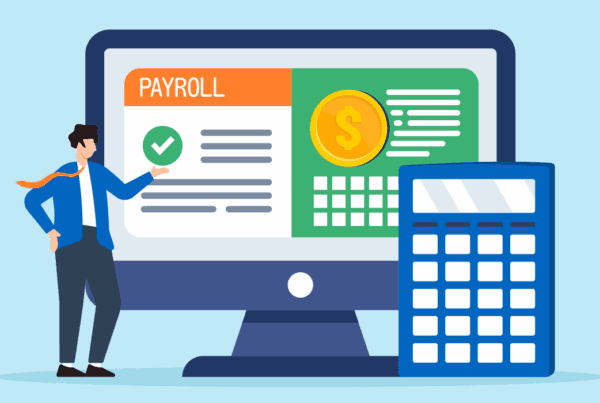
AI is transforming the way we work—from automating administrative tasks to personalising learning and speeding up recruitment. The adoption of AI in the workplace is picking up pace. Executed correctly, the use of AI can support more agile, inclusive, and rewarding workplaces.
But there’s a catch: not everyone’s feeling confident about it. And negotiating that hesitation? It often lands with HR.
For HR leaders, overcoming resistance to AI is not just a technology issue- it’s a human issue. Successfully integrating AI into your workplace means tackling concerns, building digital confidence, and creating a culture that’s ready for change. In this article, we explore why and where resistance to AI can show up and what HR can do to move things forward.
Why Employees Resist AI in the Workplace
Before tackling resistance, it’s important to understand its root causes. When employees hear “AI”, they don’t think “efficiency”—they think: “Is this going to replace my job?”, “Will I be constantly monitored?” or “What if I don’t know how to use it properly?”
Other common reasons employees resist AI include:
- Lack of trust in AI decisions, especially in hiring or performance evaluations
- Uncertainty about new responsibilities or skill requirements
- Perceived threat to autonomy or creativity
These fears are real. In many workplaces, there is a growing skills gap in digital confidence, especially outside of tech-focused roles. Many employees are worried that AI means being automated out of a job, or that they’ll be judged by algorithms, not their actual work. Let’s take a look at where specifically this resistance can happen and what HR teams can do about it.
Where AI Resistance Shows Up in HR
Recruitment and Hiring
From CV screening to automated interview scheduling, AI is already part of most large organisations’ hiring process. But job seekers and hiring managers alike often have concerns about fairness, bias, and transparency.
What to do: Be upfront about how AI is being used. Make sure your recruitment tools comply with GDPR and Data Protection legislation. Always include a human in the decision-making loop and clearly communicate how decisions are made.
Learning & Development
AI-powered platforms can help tailor training to individual needs, but many employees worry these tools will feel impersonal, or that they’ll be forced into reskilling they didn’t ask for.
What to do: Use AI to enhance, not replace, your existing L&D efforts. Highlight how personalised learning can support long-term career growth and continuous professional development (CPD).
Monitoring and Productivity Tools
Tools that track digital activity or “time on task” can feel invasive, especially in hybrid and remote work setups, which are increasingly common.
What to do: Be clear about what’s being monitored and why. Focus on team-wide insights and wellbeing, not micromanagement. This is particularly important in light of employment law around data usage and employee privacy.
Performance Reviews
Some platforms use AI to highlight high performers or identify issues. But people are understandably nervous about being reduced to a score or stat.
What to do: Make it clear that AI is a support tool, not a judge. Keep managers in the loop and encourage conversations over scores.
What HR Can Do to Encourage AI Adoption
1. Get the Conversation Going Early
Start by talking to people about what AI is—and isn’t. Clarity and communication are key.
Tip: Run internal Q&As, short videos, or informal sessions that explain AI using relatable examples. Keep it plain-English, jargon-free, and relevant to your sector.
2. Involve People from the Start
Invite employees to test new tools, share feedback, and help shape how AI is used.
Tip: Pilot a tool with a small cross-functional team before wider rollout. Include feedback loops and report back on what’s changing as a result.
3. Frame AI as Career Support, Not a Threat
In today’s world, there’s a strong demand for digital skills, but also anxiety about being left behind. Position AI as a tool to make work more meaningful and unlock growth opportunities.
Tip: Offer digital upskilling programmes, micro-credentials, or CPD-linked courses. Partner with training providers to support learning pathways.
4. Set Clear Ethical Boundaries
Trust is everything. Make sure your AI tools are fair, explainable, and compliant with local regulations. Employees expect transparency—and so do regulators.
Tip: Create a clear internal AI policy that outlines how tools are used, what data is collected, and how decisions are reviewed. Use language that’s easy to understand and accessible to all employees.
5. Shout About the Wins
When something works, let people know! Share success stories, highlight early adopters, and celebrate small wins.
Tip: Use internal newsletters, team meetings or company updates to spotlight how AI is helping teams save time or solve problems.
Final Thoughts: It’s Not About Technology, It’s About People
The future of work isn’t about being replaced by technology—it’s about creating smarter, more human workplaces. AI can help reduce admin, personalise learning, and improve decision-making—but only if applied correctly and only where people are ready to trust and use it.
HR leaders have the tools to make that happen. By focusing on clear communication, inclusive training, and ethical use, HR leaders can turn resistance into readiness and help organisations thrive in a digital future.






